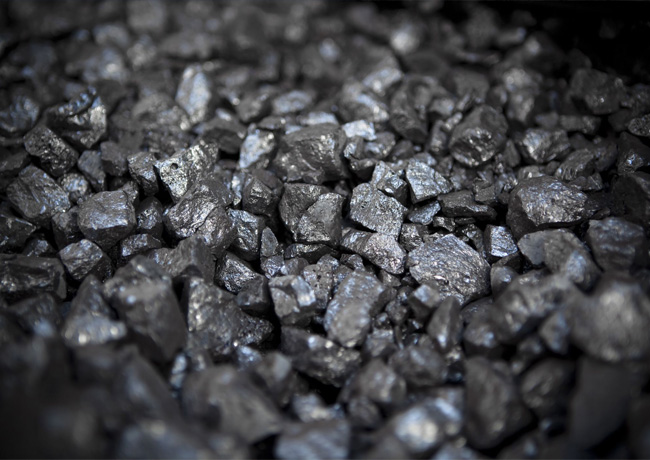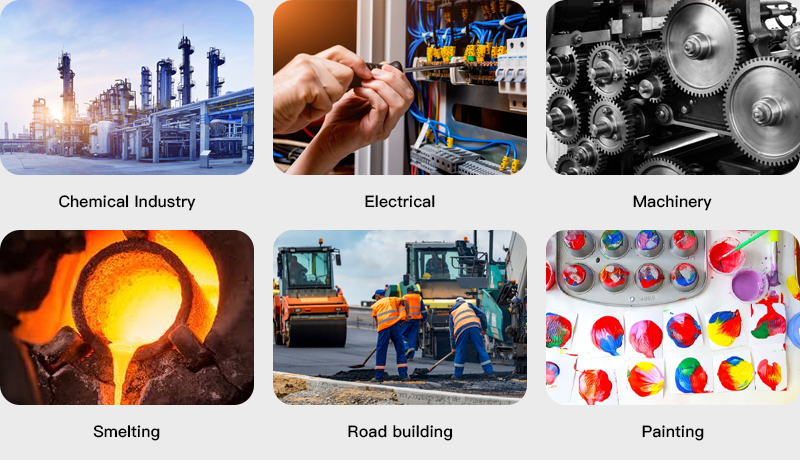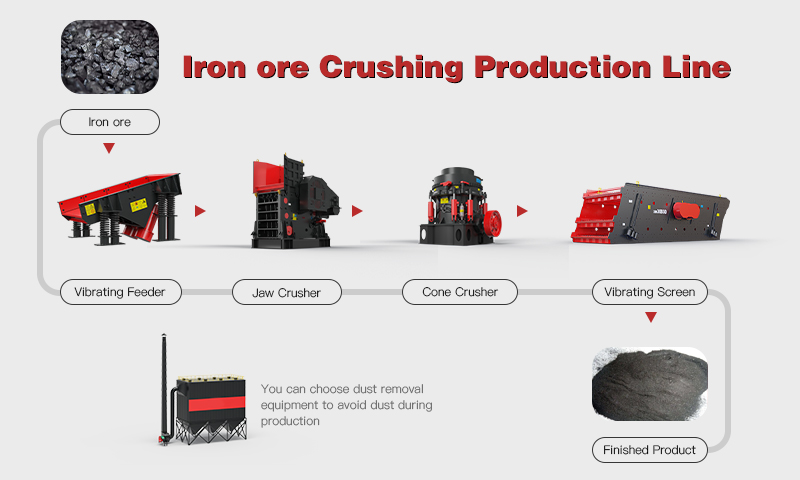
Iron ore beneficiation involves various processes tailored to the type and nature of the ore. Ore dressing plants typically employ three stages of crushing—coarse, medium, and fine—to process iron ore effectively. The goal is to achieve more crushing and less grinding, optimizing production efficiency and reducing costs. The cone crusher is generally regarded as the best option for fine crushing due to its efficiency and reliability.

1. Feeding: Iron ore is evenly fed to the jaw crusher by a vibrating feeder for coarse crushing.
2. Primary Crushing: Coarse crushing of iron ore by the jaw crusher.
3. Secondary Crushing: Coarse crushed materials are conveyed to the cone crusher by a belt conveyor for further crushing.
4. Screening: The crushed materials are transported to a vibrating screen for particle size screening.
- Finished Product: Materials that meet the particle size requirements are conveyed to the finished product stack via a belt conveyor.
- Re-crushing: Materials that do not meet size requirements are returned from the vibrating screen to the cone crusher for further crushing, forming a closed-circuit cycle.
The particle size of iron ore can be adjusted and classified based on user requirements.

Iron ore is a critical material for iron and steel production. The industrial definition of iron ore is based on its iron content and usability, distinguishing it from other ores like manganese ore. After mining, iron ore undergoes various processing steps to produce a high-grade concentrate for steelmaking.
The efficient processing of iron ore through these crushing steps ensures that high-quality raw materials are available for steel production, supporting various industries and contributing to economic development.